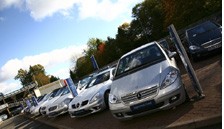Trading conditions in the used car market have deteriorated as retail sales slow and values fall.
According to the June edition of CAP Black Book, the industry benchmark to current trade values, the average price of a three-year-old car has fallen by around 4% in recent weeks.
Driving the downturn is a combination of factors including reduced retail demand, increased supply and a deterioration in the quality of many cars offered in the open market, according to CAP.
There are also signs of growing volumes in the late plate sector, where shortages last year drove much of the increase in values which led to average prices ending the year 16% higher than at the beginning of 2009.
Condition has again returned to prominence as a critical factor restraining prices as hard-pressed trade buyers take account of refurbishment costs.
According to the market commentary in the June edition of Black Book, desirable cars do continue to command strong prices but only represent a fraction of the stock on offer.
A CAP spokesman said: “A large and increasing number of vehicles which are not in clean condition are failing to sell at all.
"This is not because there is no market for anything but the best cars, rather because many vendors have been refusing to accept what are in truth fair bids that reflect the investment required in refurbishment.”
But it is the signs of increased volume in nearly new cars that CAP identifies as the biggest threat to overall price stability, according to Black Book.
“We have consistently identified late plate supply as a critical factor in the residual values strength of the market after the lessons of last year’s dramatic upswing.
“In short, a lack of nearly new stock diverts demand down the value chain and helps to prop prices up. Conversely increased late plate supply weakens values and this ripples down through the age bands.
“There are now signs of an increase in nearly new supply and this can be seen in the volume of sub-12 month stock advertised on one online source rising by 20% between April and May.”
CAP does not foresee any strengthening in the market for the immediate future, with consumer confidence at a low ebb and even an imminent World Cup, which has historically tended to contribute to a fall-off in used car sales.













Login to comment
Comments
No comments have been made yet.